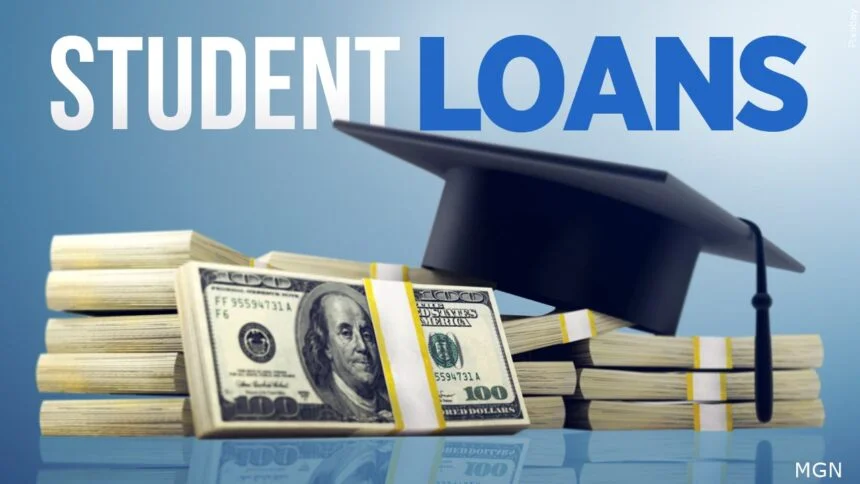Student loans have long been a financial burden for many individuals pursuing higher education. In times of economic hardship or unforeseen circumstances, the ability to pause or temporarily suspend student loan payments can provide much-needed relief. In this article, we will explore the concept of a student loans pause, its purpose, and the impact it has on borrowers. We will examine the different temporary relief measures available, the eligibility criteria, and the implications of pausing student loan payments.
I. Understanding the Student Loan Pause:
- Definition and Purpose:
A student loans pause, also known as a forbearance or deferment, refers to a temporary suspension of student loan payments. This relief measure is designed to assist borrowers who may be facing financial hardship due to various factors such as unemployment, economic downturns, or medical emergencies. It provides borrowers with a temporary break from making monthly payments, alleviating financial stress during difficult times.
- Types of Relief Measures:
There are two primary forms of temporary relief measures for student loans:
a. Forbearance: During forbearance, borrowers are allowed to temporarily stop making loan payments or reduce their monthly payment amounts. However, interest may continue to accrue, increasing the overall loan balance. Forbearance can be either discretionary, granted by the lender, or mandatory, offered during specific circumstances such as economic recessions or natural disasters.
b. Deferment: Deferment is another form of temporary relief that allows borrowers to postpone their loan payments for a specified period. Unlike forbearance, deferment can be either subsidized or unsubsidized, meaning the government may cover the interest on subsidized loans during the deferment period, while interest accrues on unsubsidized loans. Deferment is typically granted for circumstances such as enrollment in graduate school, active military duty, or unemployment.
II. Eligibility and Application Process:
- Qualifying Criteria:
Eligibility for a student loan pause depends on various factors, including the type of loan, the lender’s policies, and the specific relief program. While specific requirements may vary, common eligibility criteria include:
- Demonstrated financial hardship
- Unemployment or underemployment
- Enrollment in an eligible educational program
- Active military duty
- Disability or medical issues
- Application and Documentation:
To apply for a student loan pause, borrowers must contact their loan servicer or lender directly. The application process typically involves completing the necessary forms and providing supporting documentation to prove eligibility. This may include proof of unemployment, enrollment verification, or medical certificates. It is crucial to follow the lender’s instructions carefully and submit all required documentation to ensure a smooth application process.
III. Implications and Considerations:
- Accrued Interest:
One significant consideration when pausing student loan payments is the potential accrual of interest. During forbearance or deferment, interest may continue to accumulate on the loan balance. If left unpaid, the accrued interest can significantly increase the overall repayment amount. Borrowers should carefully consider the impact of accrued interest and assess whether it is financially feasible to continue making interest payments during the relief period.
- Duration and Limits:
Temporary relief measures are not indefinite and have set durations. The length of the student loan pause can vary depending on the specific program or circumstances. For example, during the COVID-19 pandemic, the U.S. government implemented a temporary pause on federal student loan payments known as the CARES Act suspension, which initially lasted until September 2020 and was later extended. It is essential for borrowers to stay updated on the duration of the relief measure and any changes or extensions that may be announced.
- Long-Term Repayment:
While a student loan pause can provide immediate relief, it is crucial to recognize that the repayment ofthe loan will resume once the relief period ends. Borrowers should plan ahead and prepare for the resumption of loan payments, considering the impact on their overall financial situation. It may be necessary to adjust budgets, explore alternative repayment plans, or seek financial counseling to manage the repayment effectively.
Conclusion:
Temporary relief measures such as a student loans pause offer crucial support to borrowers facing financial hardship. By temporarily suspending or reducing loan payments, these measures provide much-needed breathing room during challenging times. Understanding the different types of relief measures, eligibility criteria, and implications is essential for borrowers considering a student loan pause. It is crucial to weigh the benefits against potential drawbacks such as accrued interest and to plan for the resumption of loan payments once the relief period ends. By navigating the student loan pause effectively, borrowers can find temporary relief while staying on track towards long-term financial stability.






